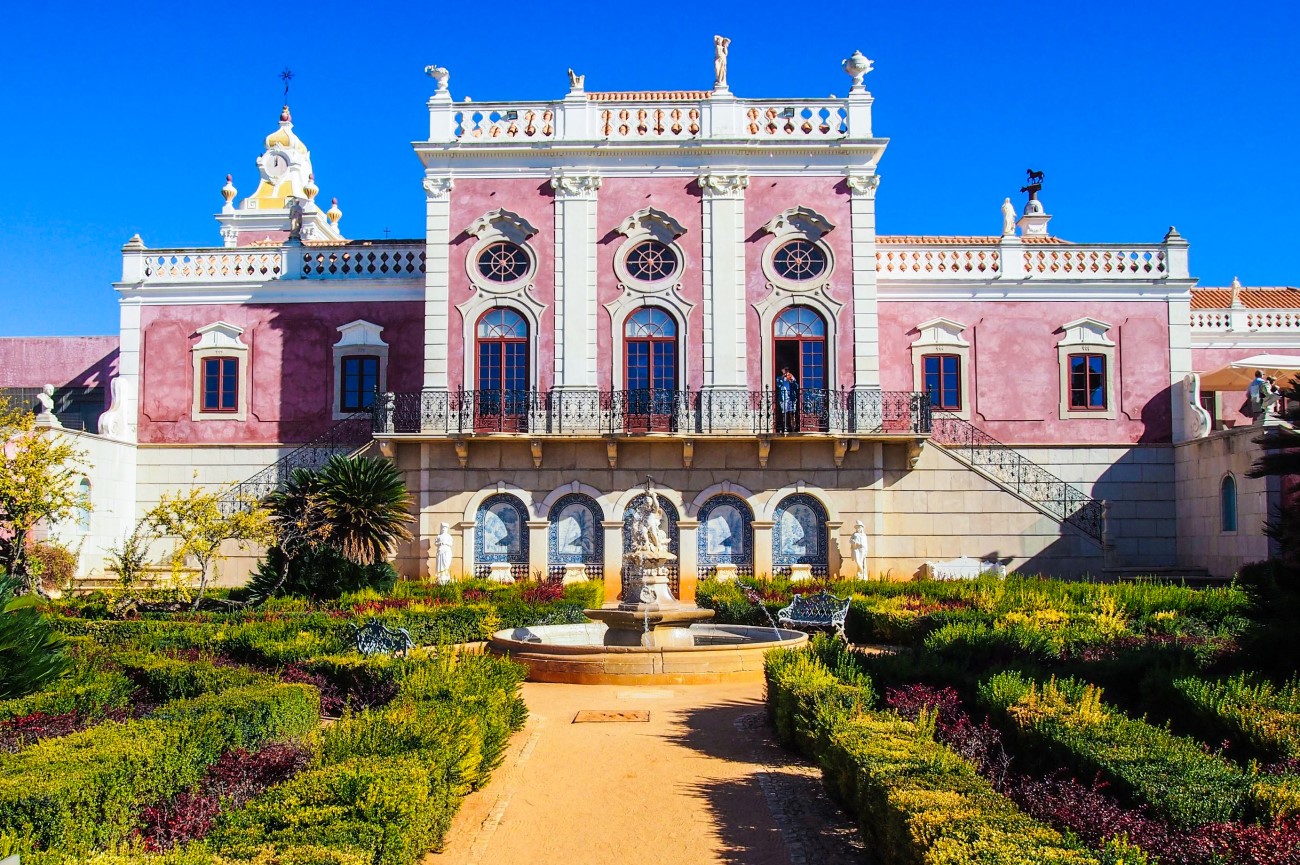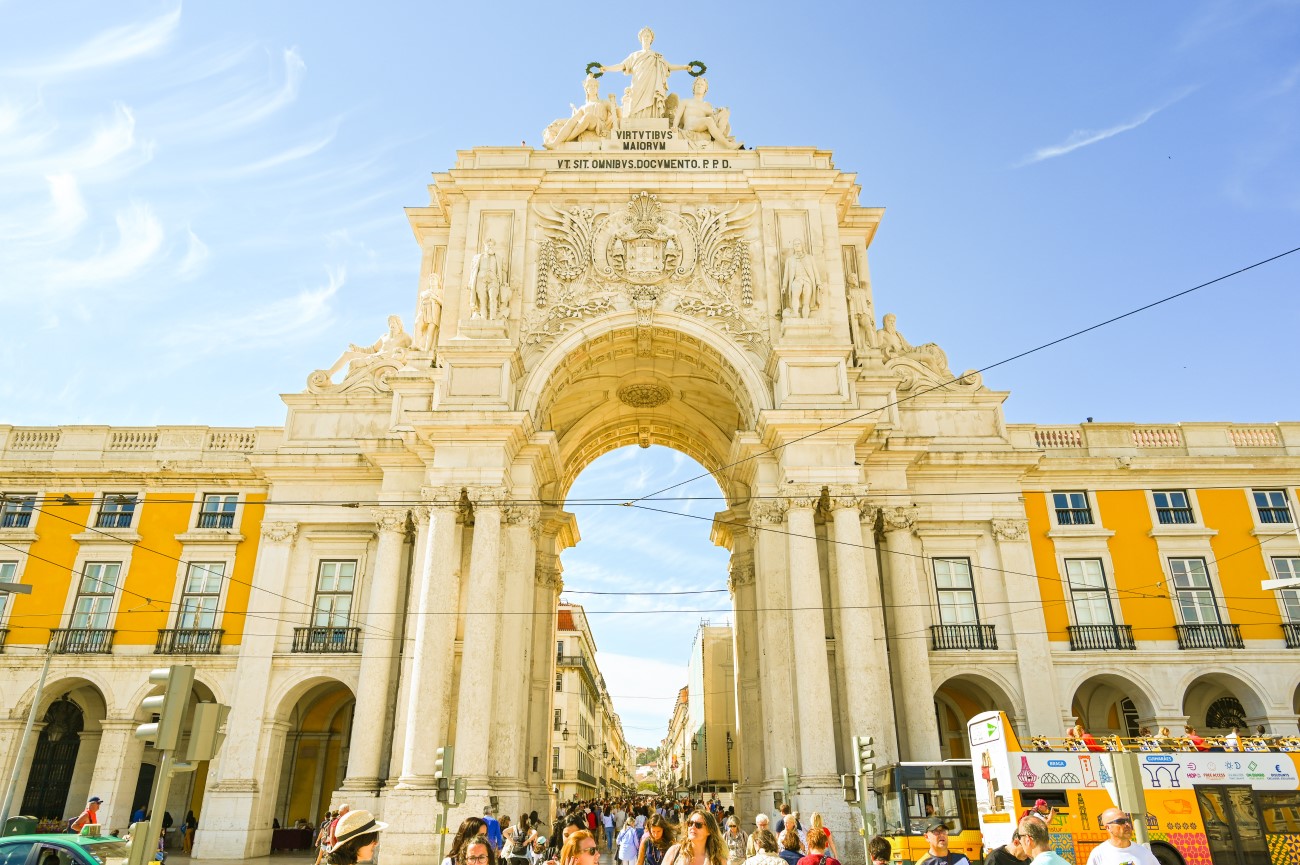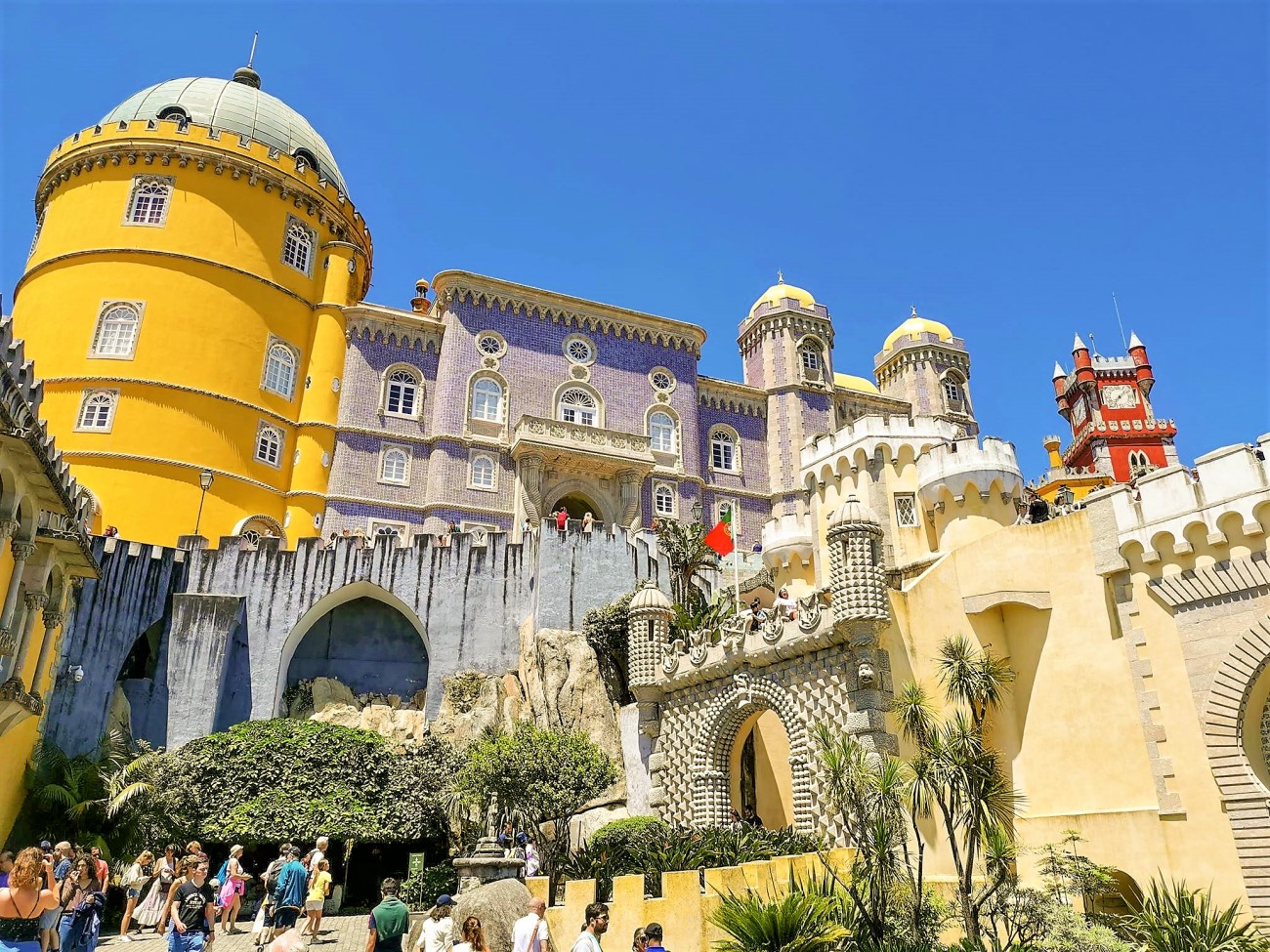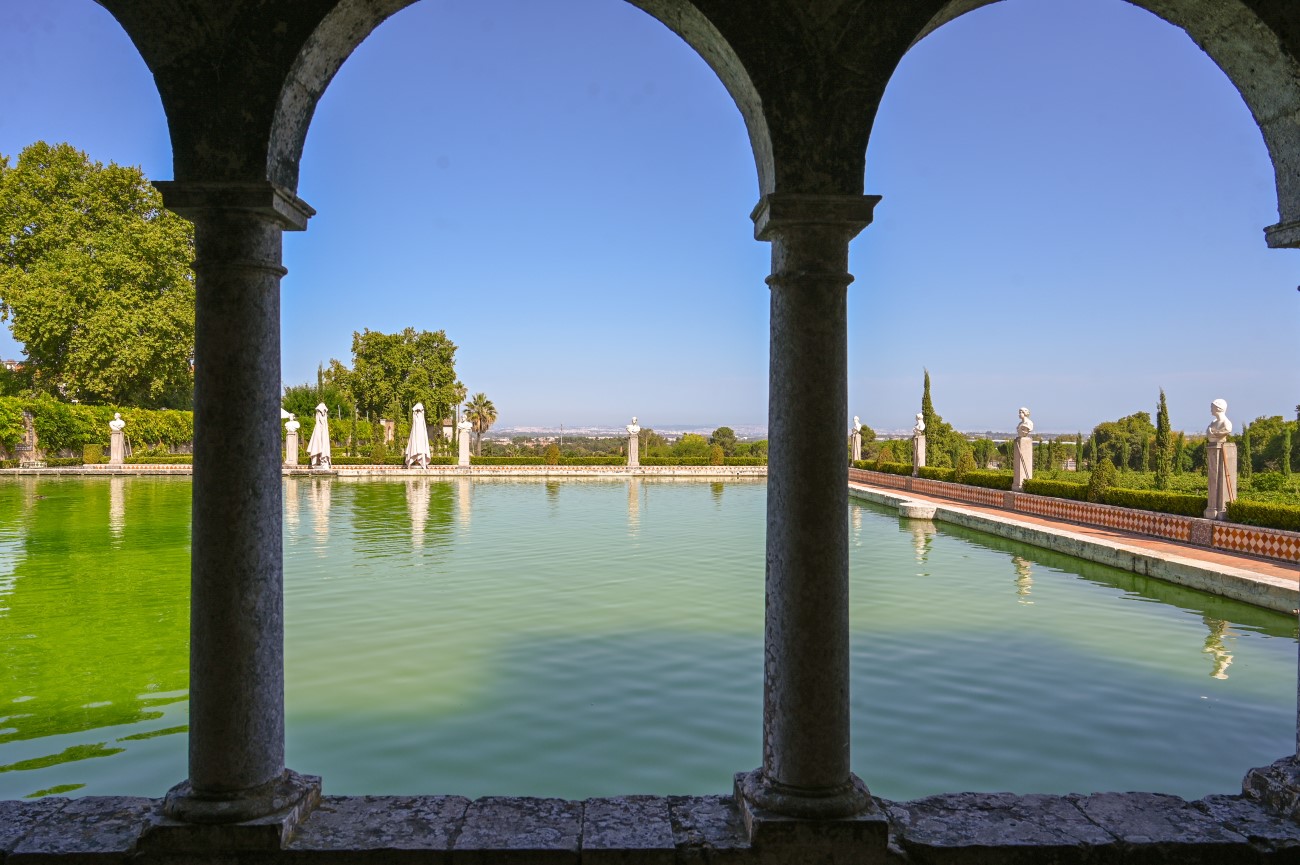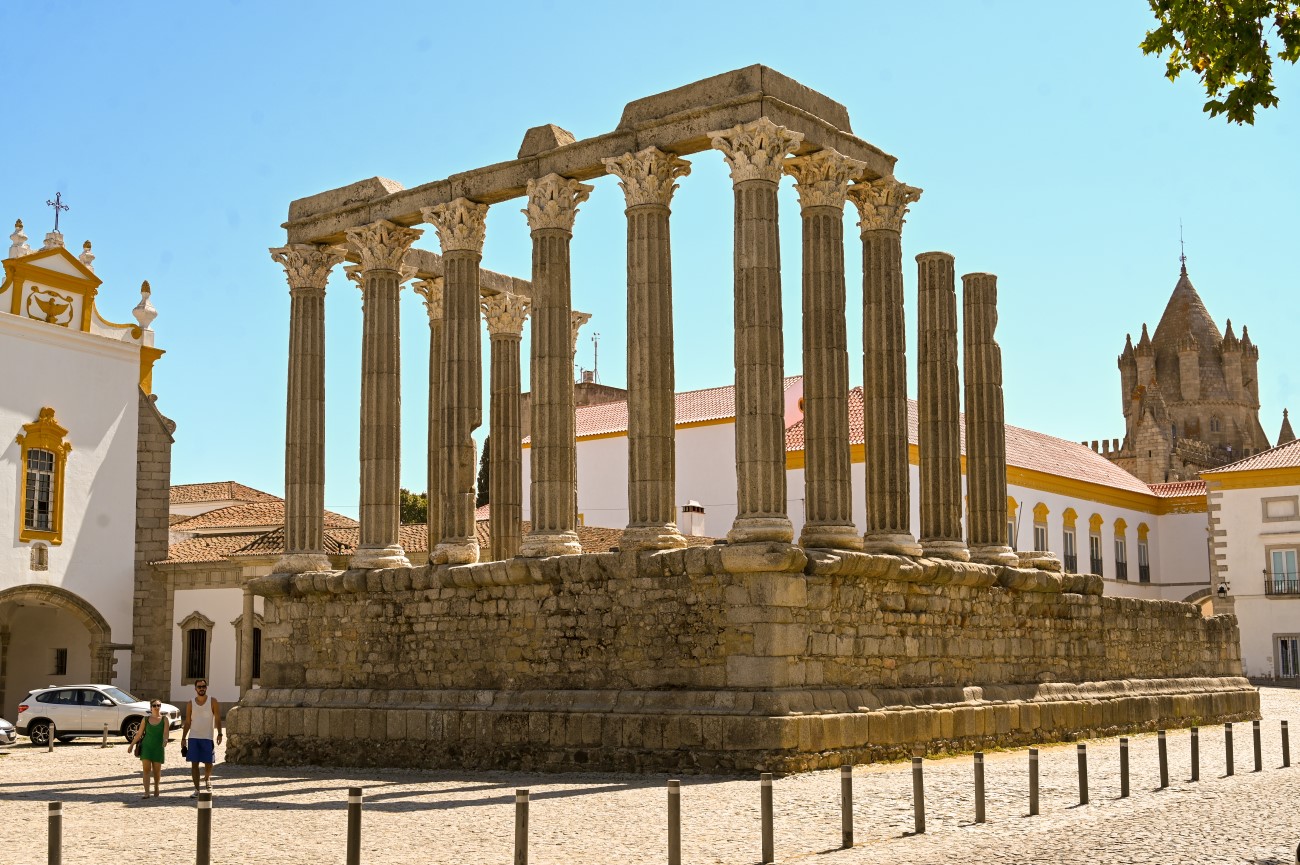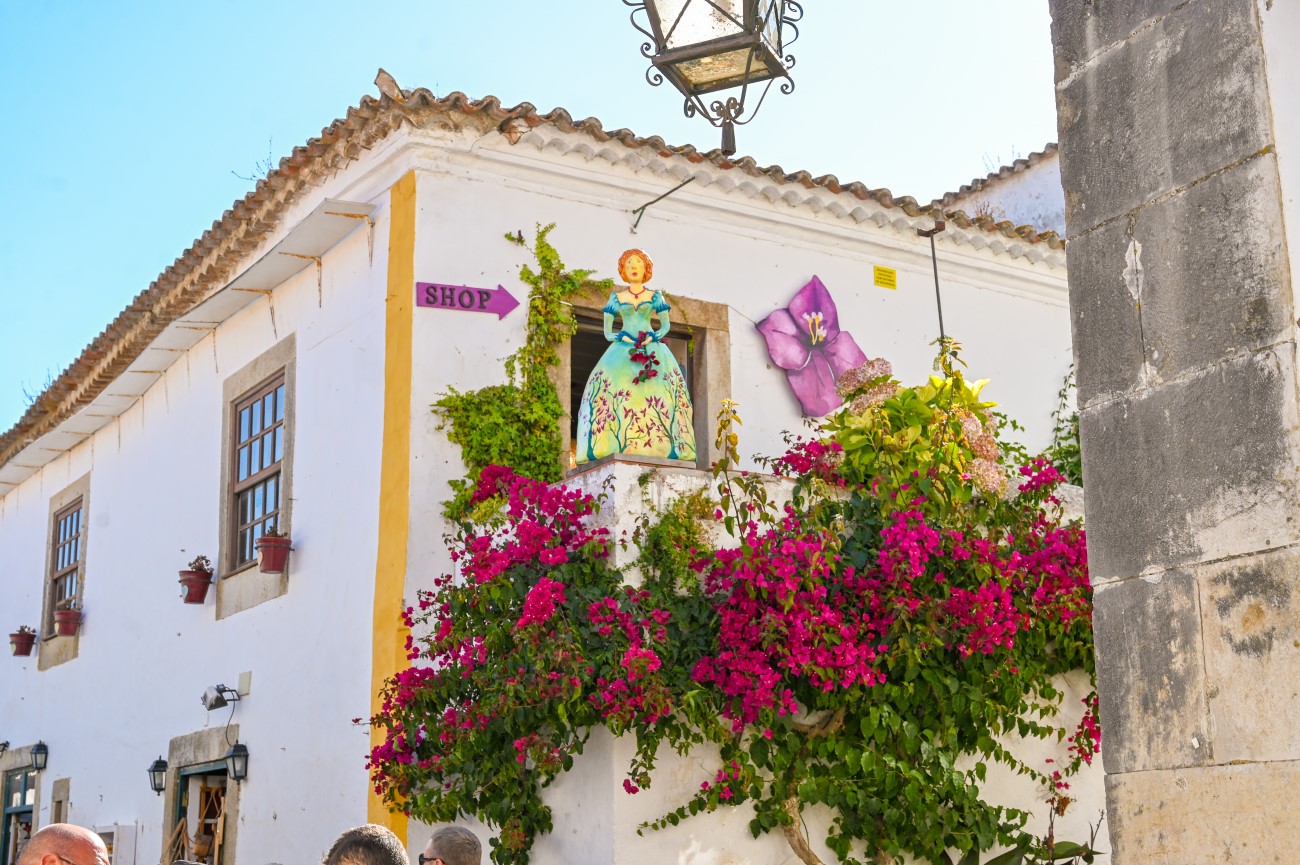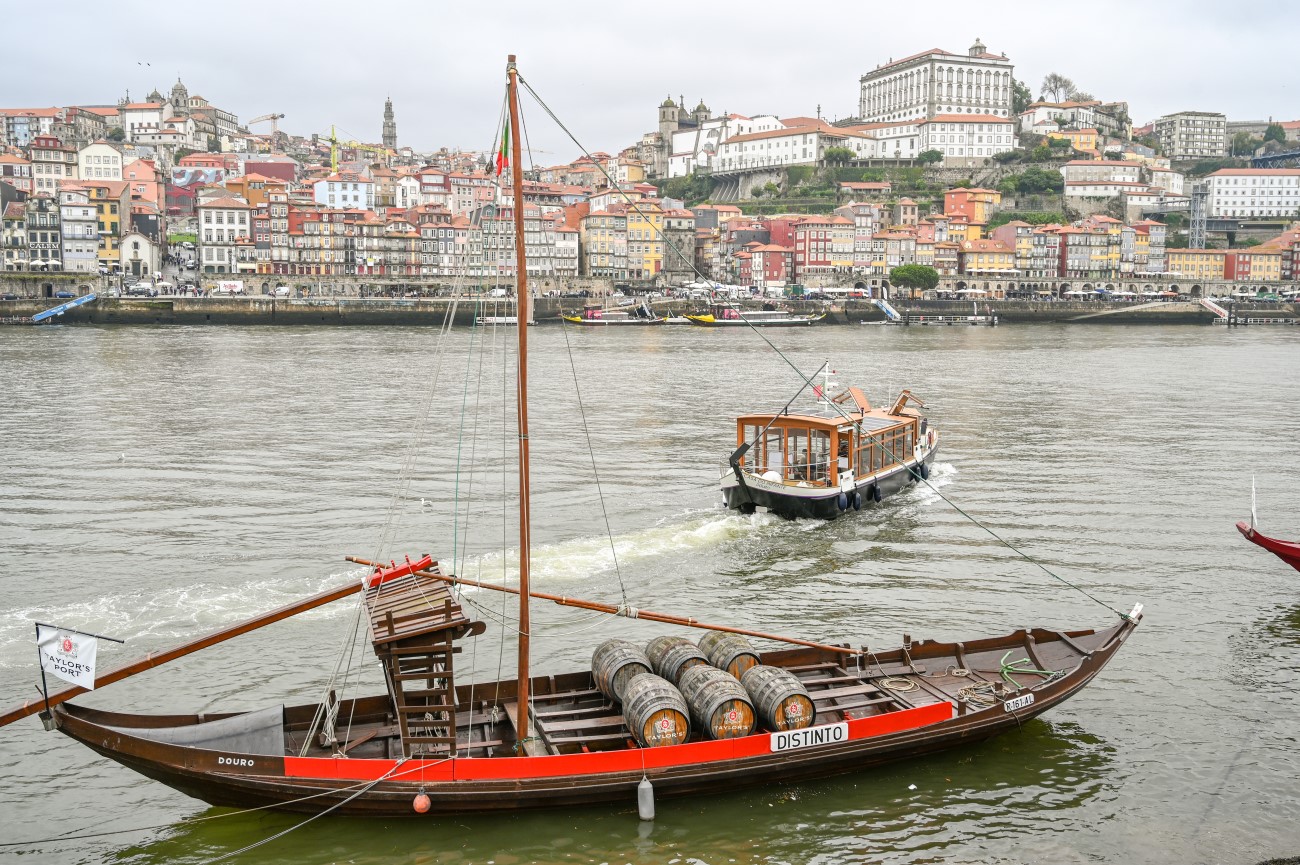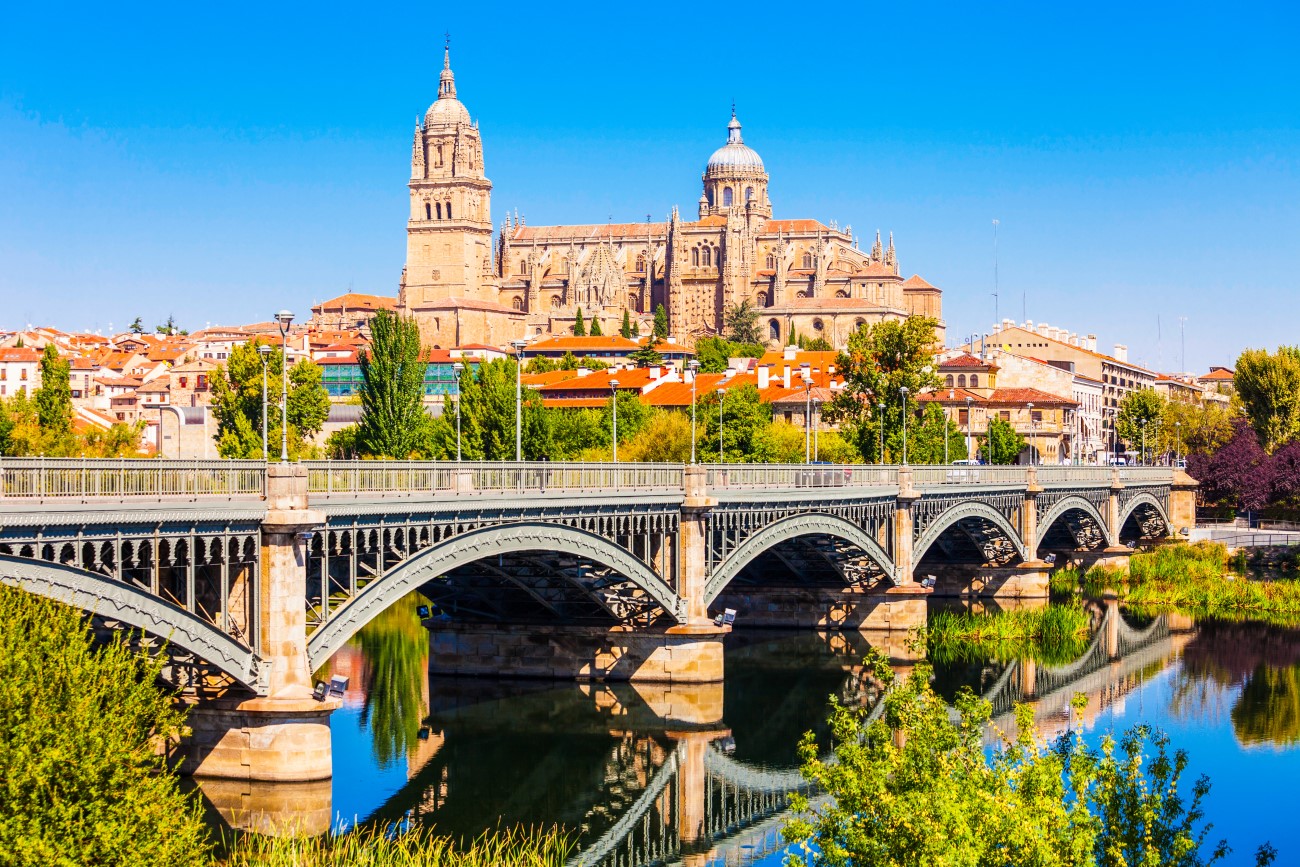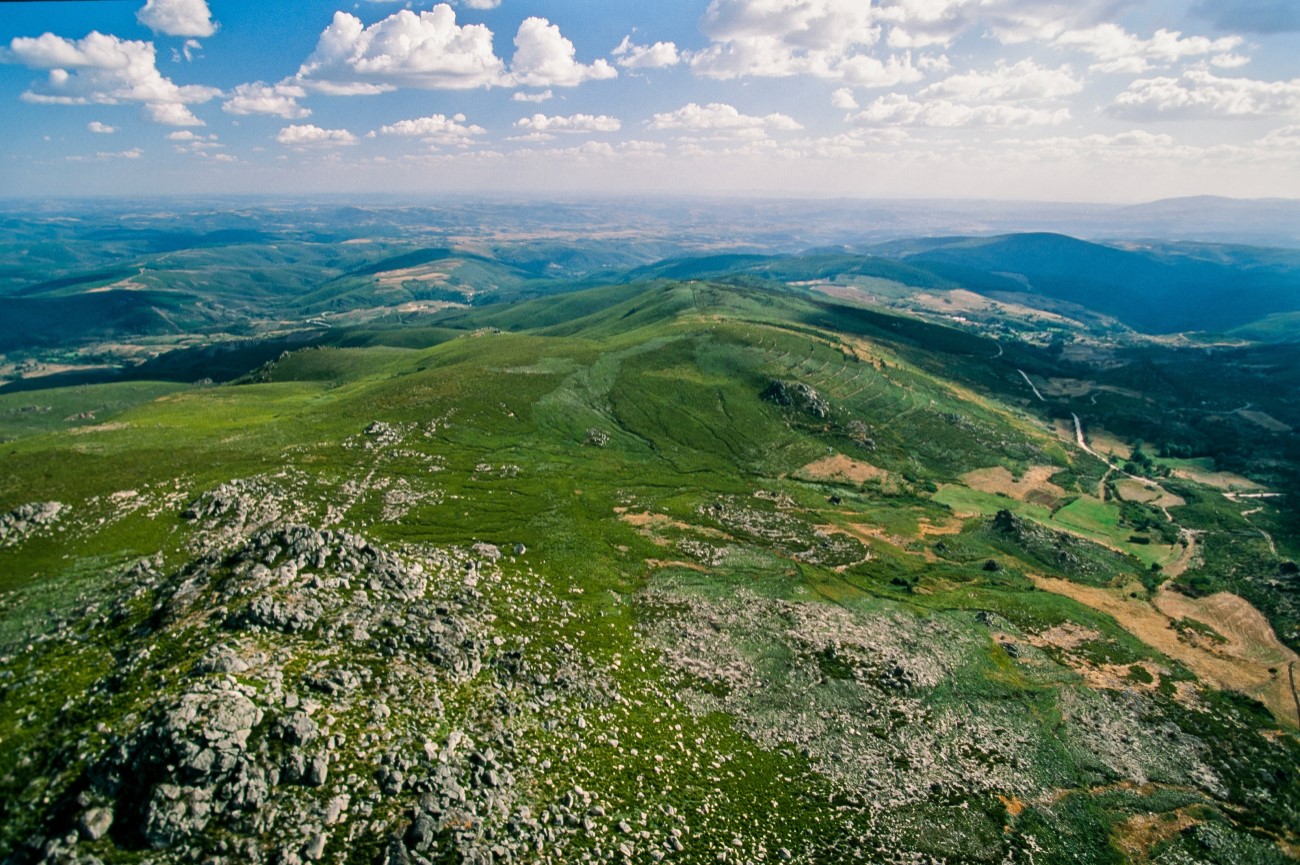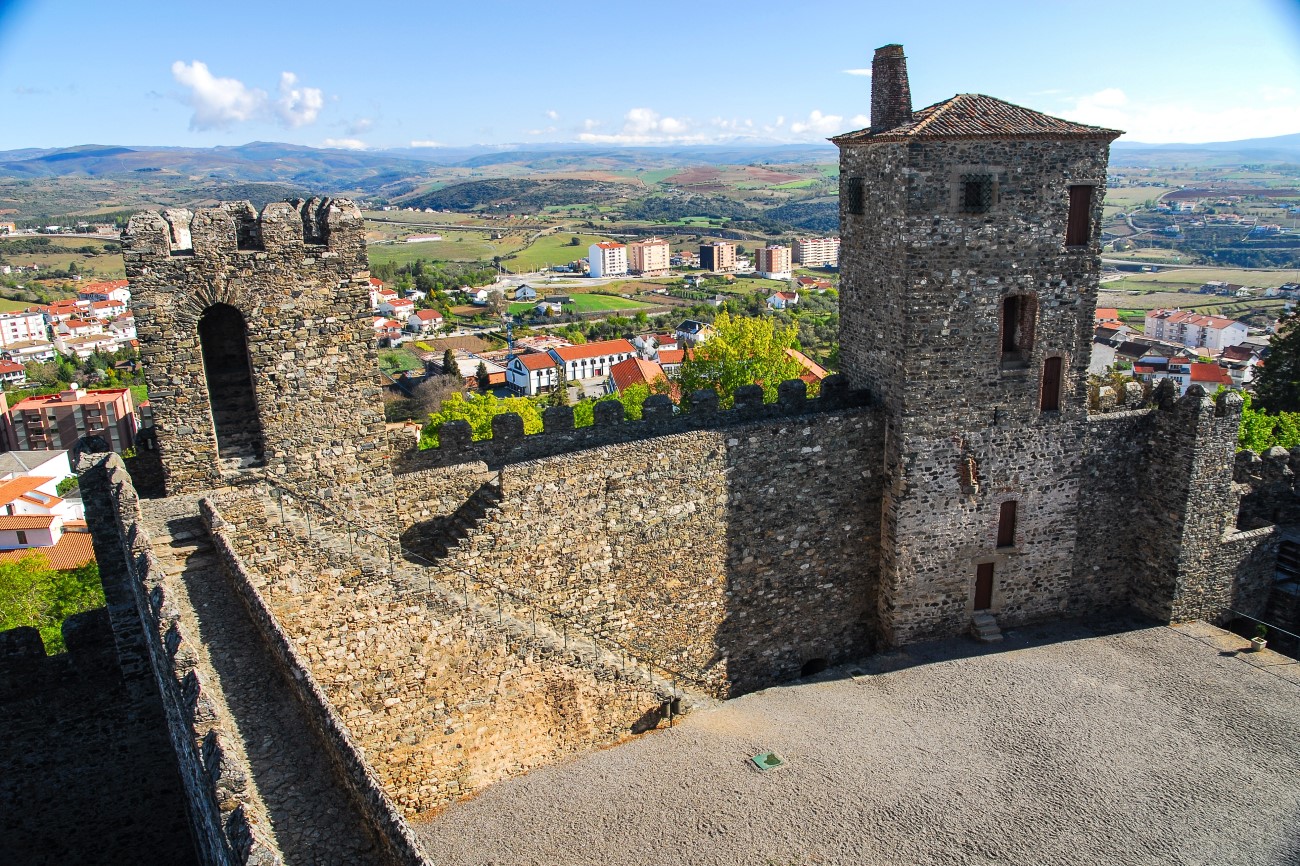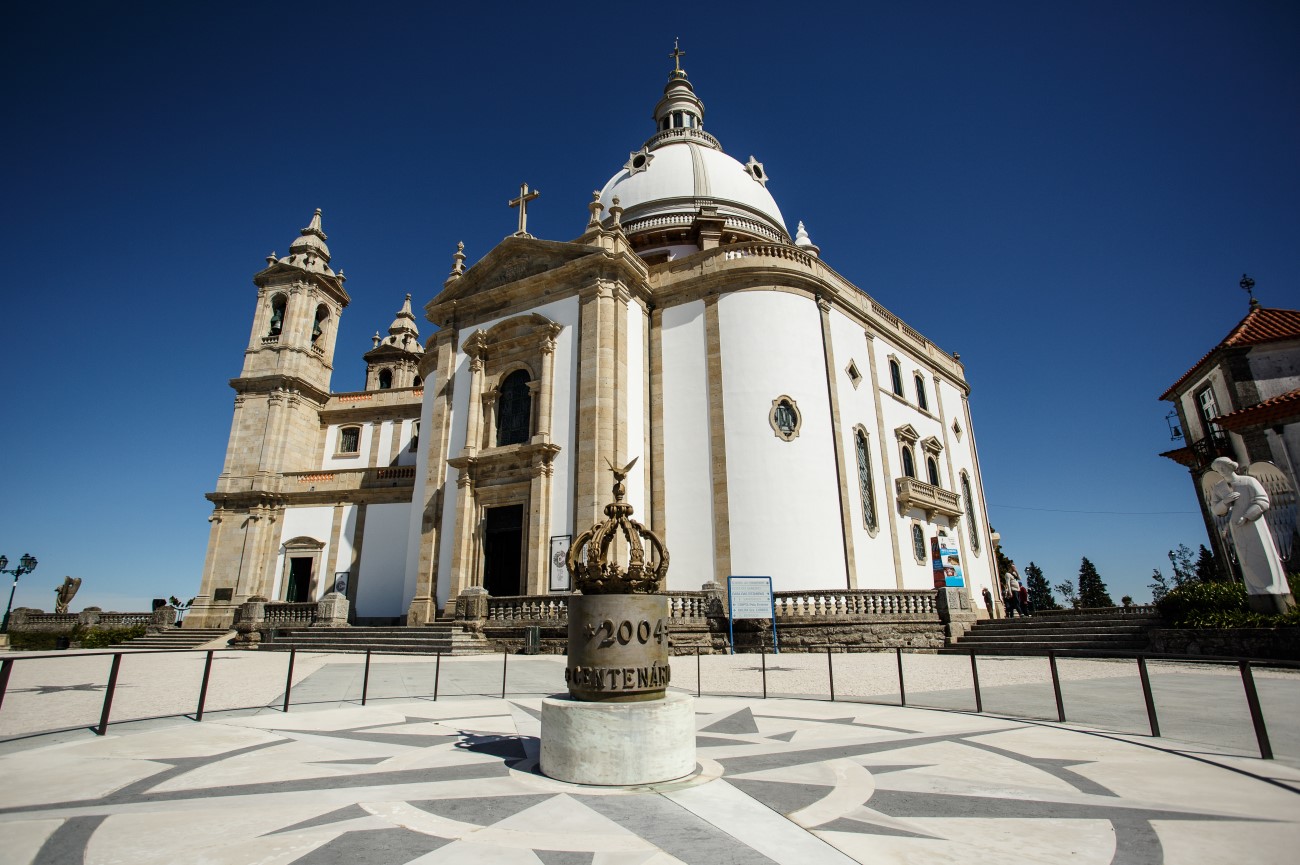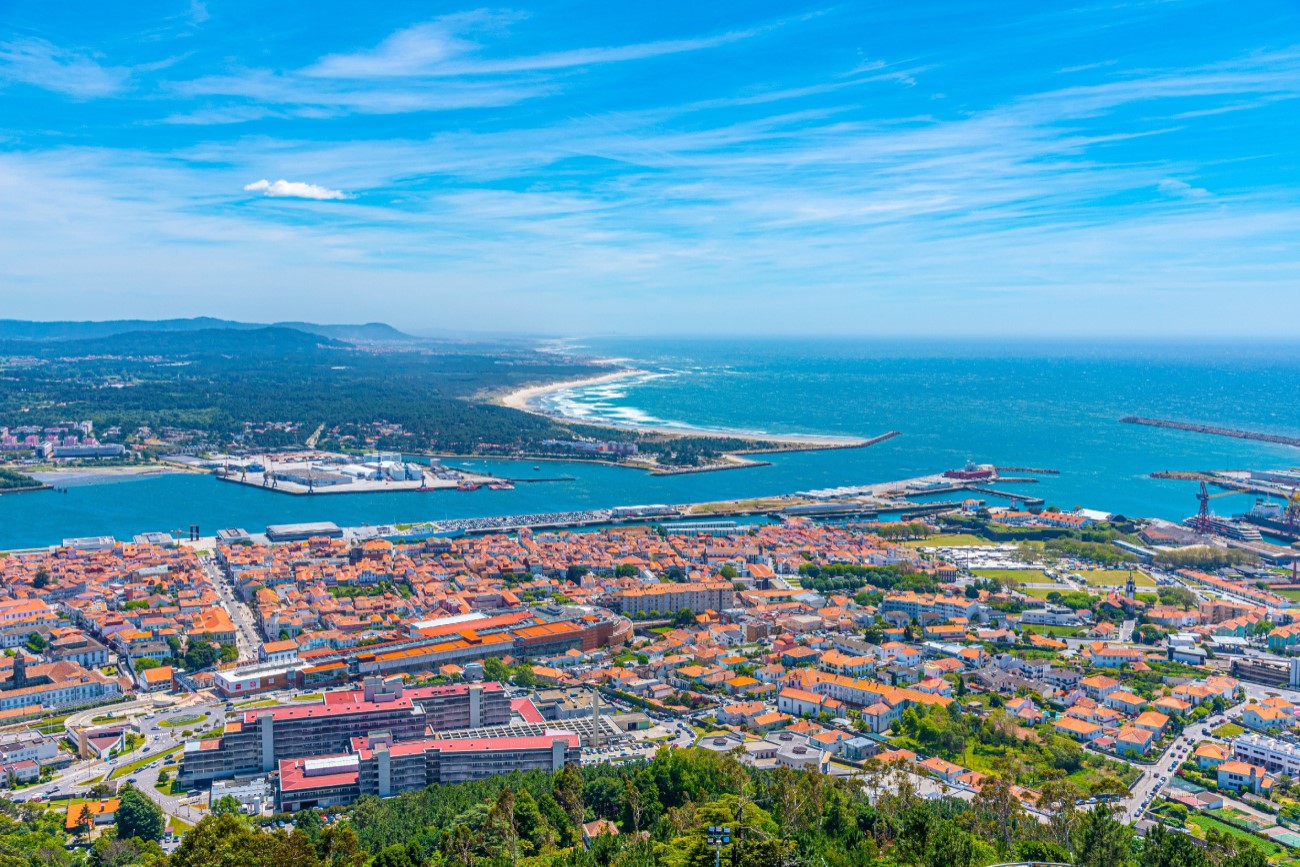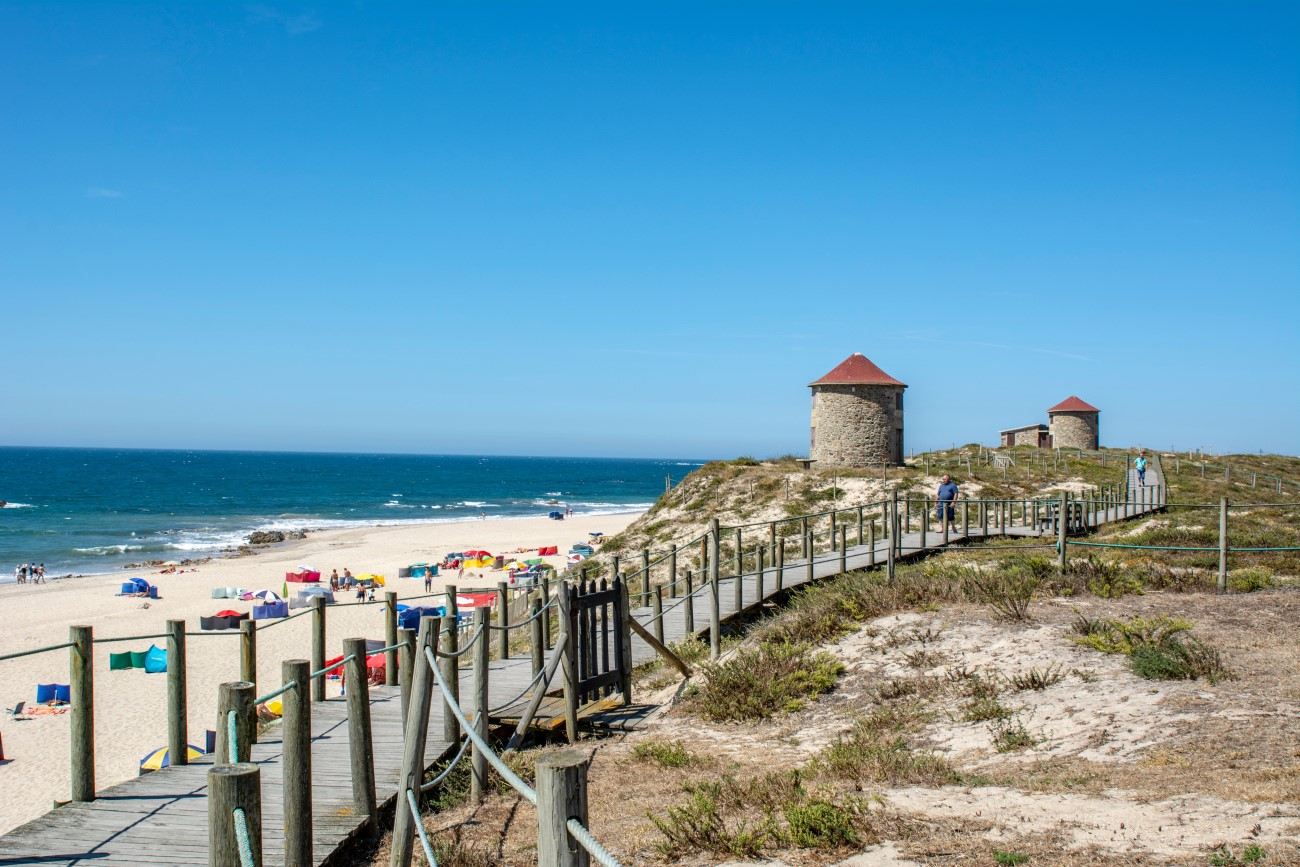Portugal Road Trip Itinerary

Most people arrive in Portugal through Lisbon, the country’s capital. But this little corner of Europe has much more to offer. We packed our bags and hit the road to explore the best cities, beaches and historical attractions in Portugal.
We already showed you the best of South Portugal on our Algarve road trip. This time, we’re heading north, deep into the country’s wine regions, hilltop villages and natural parks with mountains and waterfalls. We even took a small detour to Spain to sample some tapas and visit the picturesque towns of Salamanca and Zamora.
Below is an overview of our Portugal road trip itinerary. It begins in Lisbon, continues to Alentejo and then goes up the coast, passing through Porto and the Douro Valley until it reaches Viana do Castelo. You can follow along or choose your own starting point and go from there.
Note: The links on this article will take you to a personalised itinerary of each city, which include tips on what to see, where to eat, and where to stay.
Lisbon Region
As the capital, Lisbon is a good starting point for anyone looking to visit Portugal. It’s hard not to fall for this city with its colourful tiled façades, historical monuments and yellow trams squeezing their way up and down the hills. As you walk through the city, you’ll inevitably stumble upon a viewpoint, catching a glimpse of the Tagus river in the distance.
Before beginning our road trip, we spent three days in Lisbon, exploring its neighbourhoods and visiting the city’s main attractions. From the trendy bars of Príncipe Real to the quaint streets of Alfama and the imposing monuments of Belém, we did our best to explore every corner of the city. Of course, we couldn't miss the pastéis de nata and ginjinha too.
After that, we went on to explore Sintra and Cascais. Both these towns are easily reached by train from Lisbon and were once holiday retreats for the Portuguese Royalty. Sitting above a hill, Sintra is famous for its fairytale palaces and majestic gardens, but this region also has its share of beaches. Cascais, on the other hand, is a small coastal town offering beaches and incredible scenic points like Boca do Inferno.
From Cascais, we drove to Setúbal, where we spent a day exploring Azeitão and Sesimbra. We visited the wineries of Azeitão and relaxed in the pristine beaches of Sesimbra, and in between, we ate some delicious grilled fish.
Alentejo
Our next stop on this road trip was Évora, the capital of Alentejo.
Few cities in Portugal have as much history as Évora. This city is an
open-air museum, where Neolithic monuments meet Roman ruins and Gothic
churches. Among those churches is an eerie bone chapel and an
impressive fortress-like cathedral.
Évora is also the perfect base to explore Alentejo, a balmy region dotted with vines, olive groves and cork trees. From fortified villages to vineyards and remote beaches, our Ultimate Guide to Alentejo shows you everything you can’t miss in this region of Portugal. Besides the top attractions, we also included a list of restaurants and hotels so you can make the most of your stay.
West Coast
From Alentejo, we headed up the coast towards Ericeira and Peniche. These two seaside towns are among the best spots for surfing near Lisbon, so we couldn’t help but join a lesson. Even if you’re not into surfing, it’s worth coming here for a day trip on the beach and to try some fresh seafood.
Both towns are old fishing ports, but they’re very different from each other. Ericeira is an attractive town with whitewashed houses trimmed in blue, while Peniche has more of a low-key atmosphere, drawing surfers with its tube waves. If you visit between June and September, you can fit in a trip to the Berlengas Island, an ideal spot for snorkelling and scuba diving.
A few miles east of Peniche is the medieval town of Óbidos. We spent a day here getting lost in its narrow cobblestone streets, drinking ginjinha , and climbing up the walls of the castle before heading back to the coast.
Nazaré was our next stop, another coastal town packed with beaches and a lively food market. It’s famous for its huge waves, and many surfers come here to experience this natural phenomenon.
Central Region
After Nazaré, we drove away from the coast to visit Tomar. The first thing you’ll notice when you arrive is the astonishing Convent of Christ looming over the city. Tomar was a former Templar town, and this monument is a reminder of that era. The convent might be the top attraction in Tomar, but there’s much more to discover, including beautiful churches and parks. Once you’ve seen Tomar, you can check our day trip ideas and explore other nearby towns such as Dornes or Fátima.
The next big city on our road trip was Coimbra, which is about an hour away from Tomar. It’s home to the oldest university in Portugal, and even today, it attracts students from all corners of the globe. Among its main attractions is a library with an impressive Baroque interior. We spent two days in Coimbra, exploring the university grounds, visiting churches and wandering through romantic gardens. At night, we heard the sound of Fado, sang by the local students. If you can spare a couple more days in this area, a day trip to the forest in Bussaco or the Roman ruins in Conímbriga are a few of the suggestions we left for you.
Next stop was Aveiro. This city left a mark for its charming Art Noveau buildings, and the chain of canals and the boats reminded us a little bit of Venice. The beach wasn’t far away either, so we couldn’t help paying a visit to Costa Nova. Besides the beaches, this little seaside town is a sight to behold with its promenade of colourful striped houses. If you decide to stay a little longer, you can also follow the nature trails near Aveiro that take you through dunes and mountains.
The North of Portugal: Part I
From Aveiro, we made our way up to the North of Portugal, starting in Porto, the beloved home of Port wine. We spent two days in the city, visiting monuments and getting lost in its narrow streets. We covered most attractions on our first day, including the famous Livraria Lello and the striking Torre dos Clérigos. On the next day, we took a mini boat trip along the Douro river, and when we came back, we crossed over to Vila Nova de Gaia to visit the Port wine cellars. We even squeezed in a visit to Foz do Douro to see the beaches.
After visiting Porto, we travelled along the Douro Valley, one of the oldest wine regions in the world. Here, the vines grow on steep terraces, surrounding the Douro river on both sides. We started in Vila Real and spent the next three days visiting vineyards, tasting delicious wine (not just Port) and exploring the small villages in between. We ended our tour in Miranda do Douro, just a few miles from the Spanish border.
Spain
Since we were so close to the border, we decided to take a small detour into Spain. We spent one day in Salamanca, a radiant Spanish city located less than two hours away from Miranda do Douro. Its sandstone buildings and plateresque architecture made it clear that we had just set foot in a different country. We began our tour in Plaza Mayor and visited the city’s main attractions, from the Universidad de Salamanca to the Old and the New Cathedral. In between our sightseeing, we made room for some tapas and wine.
After Salamanca, we continued driving along the Spanish Border. We passed by the Arribes del Duero Natural Park and visited a few small towns like Aldeadávila de la Ribera and Zamora. We entered Portugal again through the tiny village of Rio de Onor and then drove through the Montesinho Park before heading to the city of Bragança.
The North of Portugal: Part II
Our road trip continued in Bragança, a historic city located just below the Montesinho Natural Park. We entered through the city’s medieval gates and spent the morning exploring the old town, where we saw the castle and several churches and museums. In the afternoon, we took a little trip down to Albufeira do Azibo, a stunning water reservoir surrounded by beaches.
After Bragança, we travelled west to Guimarães, the birth place of Portugal. This is where the country’s first king was born, and, for a while, it was even its capital. The castle was obviously on our list of things to see, but we also visited several churches and couldn’t help going up to the Penha mountain for a panoramic view of the city.
Just a short drive from Guimarães is Braga, a city brimming with churches. From the oldest cathedral in Portugal to the dramatic stairway of the Bom Jesus Sanctuary, we visited as many churches as we could. The city is also near the Peneda-Gerês National Park, a stunning nature reserve featuring mountains and waterfalls. After exploring Braga, we saved a few days to hike through the hills and swim in the lagoons of Gerês.
Viana do Castelo was the next stop on our road trip. Standing between the Lima river and the Atlantic ocean, it was a departure point for Portuguese navigators in the Age of Discovery and later, turned into a port for codfish trading. Places like the Museu do Traje and the Gil Eanes ship remind visitors of the city’s maritime history. But the reason most people head to Viana today is to see the sanctuary standing above the Monte Santa Luzia, and of course, that made our list too. If you happen to visit in the summer, the city offers a series of glorious beaches where you can go for a swim.
To end our Portugal road trip, we followed the Costa Verde from Viana do Castelo to Porto. The name Costa Verde (Green Coast) comes from the lush green landscape that surrounds the beaches in this section of Portugal. As we made our way down the coast, we stopped by a couple of towns, starting with Esposende and ending at Leça da Palmeira. If you decide to follow our footsteps, we left you with an itinerary for each town, including the beaches you can’t miss.


